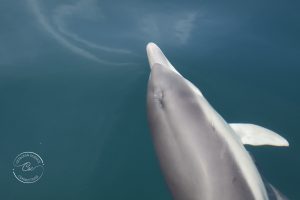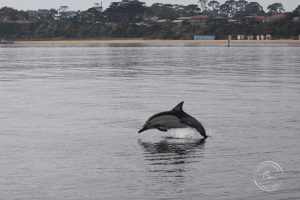The Port Phillip common dolphins
Most people know that there is a species of bottlenose dolphin that is resident to Port Phillip, but did you know that there is a second species of dolphin that is resident to our bay?
And it’s a smaller one than the bottlenose dolphin community!
![]()
This second resident species of dolphins in Port Phillip are the (short-beaked) common dolphins.
We might be biased, but common dolphins are really quite a pretty species of dolphins. They are smaller than bottlenose dolphins and can be easily identified by the beautiful gold and grey hourglass colouration on their side.
We estimate the community of common dolphins to consist of 40 individuals, whereas there is likely to be about 120 bottlenose dolphins in our bay.
Our common dolphins are a little different
While common dolphins can be observed in many locations across the globe, they are usually found offshore. This distance from the coast can make them difficult to study. They can also gather in huge groups of 1000+ individuals and migrate with seasonal bait fish events.
You will often see common dolphins in Attenborough documentaries feeding on huge balls of fish alongside seals and sharks with gannets diving around them. We are very lucky to have them in our bay and on our doorstep.

How can we determine common dolphin gender non-invasively?
Mature male common dolphins can be easily identified by the presence of a post-anal keel while mature females are often recognized by the regular presence of a calf swimming alongside them. With this in mind, it appears as though the Port Phillip common dolphin community is comprised of more females than males. This contrasts with the social structure of common dolphin communities outside of the bay and makes the Port Phillip community even more special.
More females than males?
Why more females that males? We are not 100% sure why but can only suggest that it has to do with the productivity of Port Phillip, which meets the needs of the many nursing females in the community.

